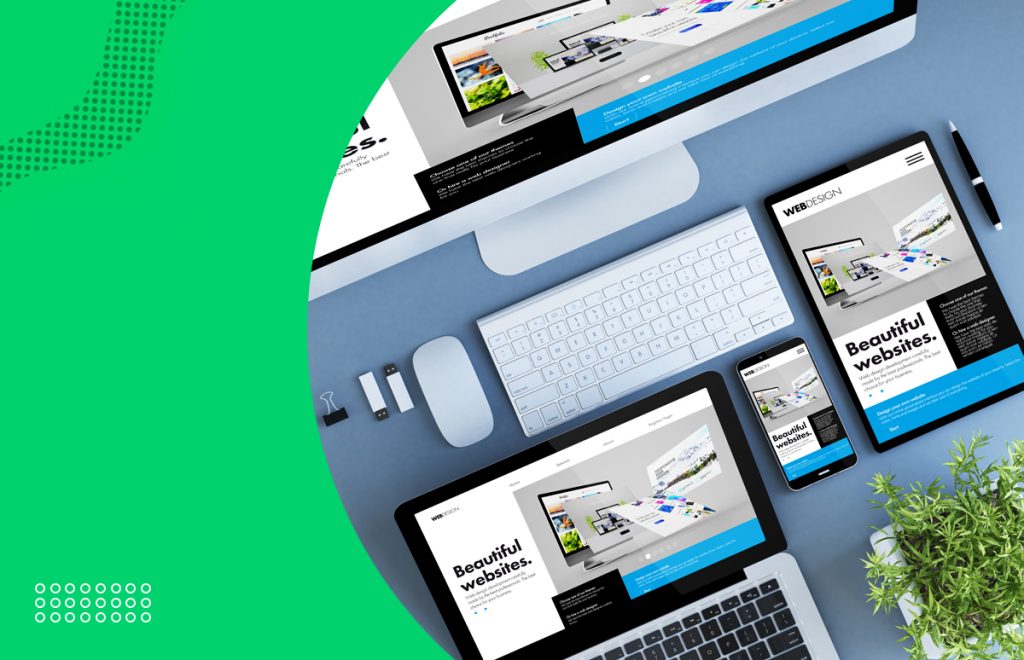Exploring the Connection Between Website Design and SEO Performance
Exploring the Connection Between Website Design and SEO Performance
Blog Article
The Ultimate Guide to Modern Site Style Trends
In the ever-evolving digital landscape, modern-day web site design fads play an important duty fit individual experience and engagement. From the increase of minimal design principles that focus on simplicity to the effect of strong typography in defining brand name identification, each component adds to a cohesive on the internet existence. The emphasis on responsive and mobile-first methods, along with cutting-edge microinteractions, further boosts functionality. The expanding focus on lasting web layout techniques mirrors a dedication to ecological duty. These fads jointly increase important concerns regarding the future of reliable internet design and what it indicates for businesses and consumers alike.
Minimalist Layout Principles
Minimalist design principles emphasize the idea that less is a lot more, promoting for simplicity and functionality in visual interaction. This method remove unneeded aspects, focusing instead on vital parts that communicate the designated message properly. By prioritizing clearness, minimal layout boosts user experience, permitting site visitors to navigate web sites effortlessly.
Core tenets of minimal design consist of the use of enough white area, which develops a sense of balance and organization. This negative area not just routes the viewer's attention to crucial elements but additionally cultivates a soothing visual ambience. Furthermore, a restricted shade scheme is often utilized, utilizing single schemes or soft tones to preserve visual cohesion and avoid overwhelming the customer.
Typography plays a crucial function in minimalist style, where understandable fonts are picked for their simplicity and performance in connecting material. Pictures and graphics are conserved, ensuring that they serve a purpose instead of distract from the total message. Eventually, minimal layout principles grow a focused setting that encourages customers to engage with the web content, boosting the general efficiency of modern-day site style. This fad reflects an expanding admiration for thoughtful, user-centric aesthetics in electronic areas.
Strong Typography Selections
Embracing vibrant typography options has actually come to be a defining quality of modern web site style, as it properly captures interest and conveys strong messaging. Developers are increasingly using typography not merely as a practical element however as an essential aesthetic component that enhances the overall visual and user experience.

In addition, the association of bold typography with minimal layout concepts enables striking contrasts, enhancing readability while preserving visual charm. The use of whitespace around bold message even more emphasizes its relevance, making certain that the message resonates with the audience.
As electronic landscapes end up being much more competitive, leveraging vibrant typography makes it possible for brand names to separate themselves and leave an enduring perception. The careful selection of font styles and their application can stimulate feelings, establish tone, and drive activity, making vibrant typography an important device in modern site style. Ultimately, it is a powerful means to enhance storytelling and make sure that vital messages are not just seen yet additionally felt.
Receptive and Mobile-first Layout
Responsive and mobile-first design has actually become a vital principle in contemporary website growth, mirroring the raising dependence on mobile devices for accessing online web content. As individual actions changes towards mobile surfing, developers should prioritize producing experiences that adjust seamlessly throughout different screen sizes and resolutions.
A receptive style ensures that a website instantly readjusts its layout, images, and functionality based on the device being utilized. Mobile-first design supporters for creating web sites originally for smaller sized screens, consequently scaling up to bigger display screens.
Carrying out mobile-first and receptive principles not just provides to user preferences but likewise aligns with search engine optimization (SEARCH ENGINE OPTIMIZATION) methods. Major search engines, like Google, focus on mobile-friendly web sites in their rankings, making it critical for businesses to take on these design strategies. In an affordable digital landscape, accepting mobile-first and receptive layout is not simply an option; it is essential for ensuring availability and engagement with a diverse target market.
Involving Microinteractions
Microinteractions play a pivotal function in enhancing customer interaction and total web site experience, specifically in the context of responsive and mobile-first layout. These refined design elements supply immediate responses to users, making communications a lot more user-friendly and enjoyable. Instances include switch computer animations, notice informs, and packing indications, which not only overview users yet likewise produce a feeling of connection with the interface.
Including interesting microinteractions can substantially boost functionality by decreasing cognitive tons. When individuals obtain acoustic or visual feedback upon performing activities, such as clicking a button or submitting a type, they really feel more confident in their choices. This fosters a smoother navigating experience, inevitably enhancing customer retention.

As site style trends continue to progress, the relevance of microinteractions can visit homepage not be overemphasized. They offer as the refined yet effective touchpoints that change normal interactions right into amazing experiences, therefore boosting the general efficiency of contemporary website design.
Lasting Web Layout Practices
Sustainable internet design practices are coming to be significantly essential as the digital landscape grows and ecological concerns increase. Developers and programmers are recognizing their responsibility to develop web sites that not just offer customer demands but additionally lessen environmental influence. This strategy includes several essential strategies.
First of all, optimizing power usage is critical. Sites must be created to fill quickly and efficiently, which minimizes web server power use and this link boosts customer experience. Strategies such as photo compression, lessening HTTP demands, and utilizing contemporary coding techniques add significantly to this objective.
Secondly, selecting eco-friendly holding companies is crucial - website design. Numerous holding business are now powered by sustainable power sources, allowing web sites to operate in a much more sustainable fashion. This selection shows a dedication to reducing carbon impacts
Additionally, taking on a minimal layout can boost sustainability. Less elements on a page result in much less information transfer, which not just accelerates filling times but likewise conserves resources.
Last but not least, promoting digital accessibility ensures that websites reach a bigger target market without unnecessary bloat, straightening user experience with environmental responsibility. By incorporating these sustainable methods, web developers can contribute favorably to both user interaction and the world's wellness.
Conclusion
In summary, modern web site layout trends emphasize the integration of minimal principles, bold typography, and receptive style to improve customer experience. Involving microinteractions add to unforgettable interactions, while sustainable techniques support for ecologically conscious development. Collectively, these components not just boost visual allure but also improve functionality, making sure that sites are both aesthetically striking and easy to use. Embracing these fads is essential for developing impactful electronic experiences that reverberate with individuals in a progressively competitive on the internet landscape.
In the ever-evolving digital landscape, modern website layout fads play an important function in shaping user experience and engagement. By prioritizing clearness, minimalist layout enhances customer experience, allowing site visitors to browse internet sites effortlessly.
Eventually, minimal design principles cultivate official statement a focused setting that motivates individuals to engage with the web content, boosting the general effectiveness of modern website style.Microinteractions play a crucial role in enhancing customer engagement and overall site experience, particularly in the context of mobile-first and responsive design.In recap, modern internet site style fads emphasize the combination of minimal principles, strong typography, and responsive layout to enhance user experience.
Report this page